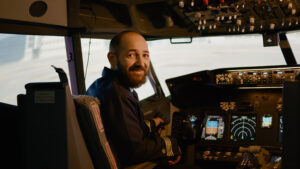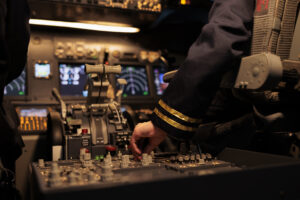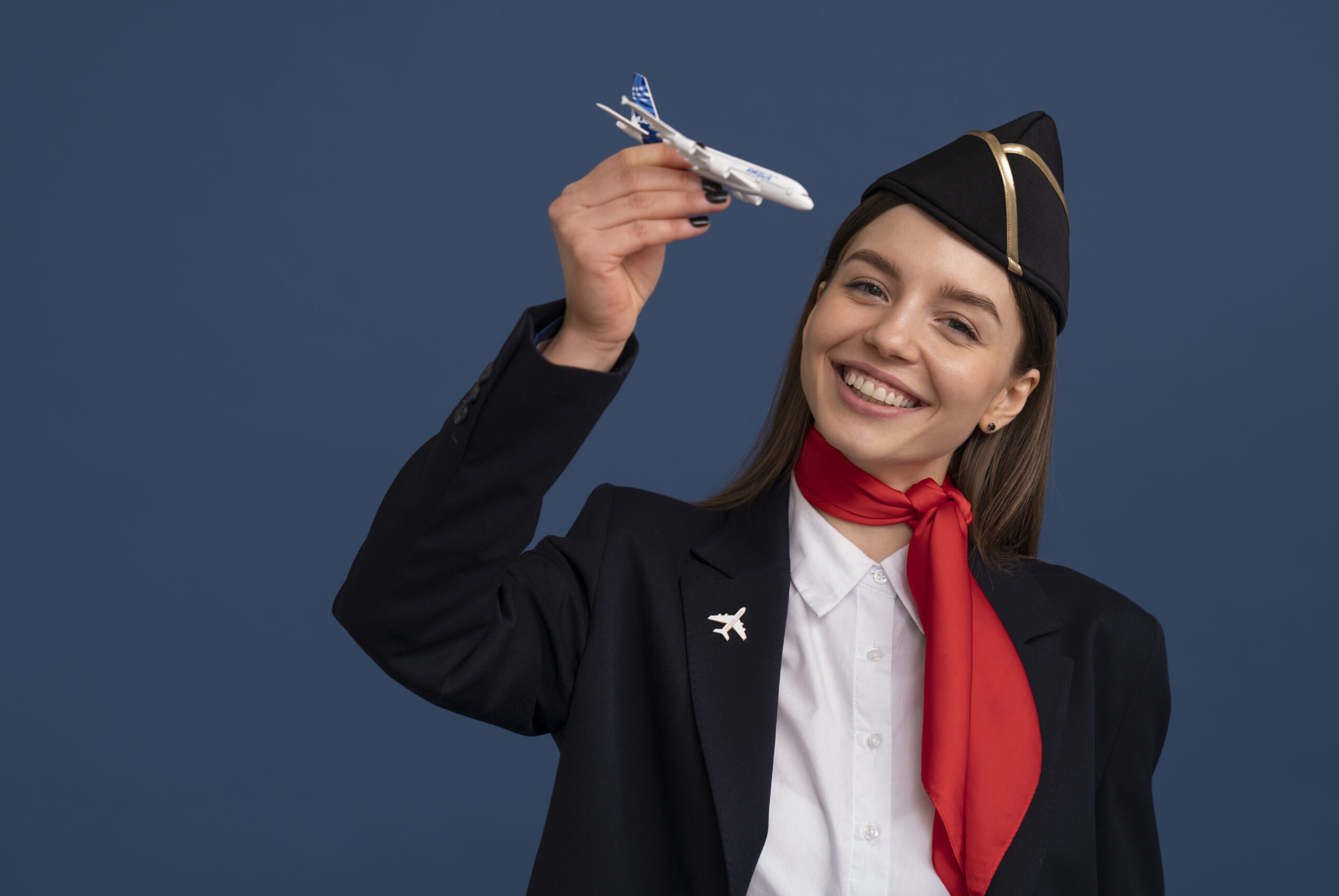Many people dream of being able to fly a plane. Whether you desire to fly as a hobby or a career, becoming a pilot opens up a world of opportunities. There are various sorts of pilot licenses, each with unique requirements and prospects. From your first solo flight to flying a commercial airliner, each step is a new adventure.
In this guide, we’ll explore the different pilot licenses, what you need to get them, and the exciting career paths they can lead to. Whether you’re just starting out or want to develop your skills, this article will help you negotiate the path to becoming a pilot.
Different Types of Pilot Licenses and Their Career Paths
1. Student Pilot License (SPL)

A Student Pilot License (SPL) is the entry-level certification for aspiring pilots in India. It authorizes individuals to receive flight instruction from a licensed instructor and to fly solo under certain conditions. This certificate is fundamental, marking the beginning of a pilot’s journey. It does not permit flying passengers or for hire but is crucial for gaining the initial experience necessary to progress to more advanced licenses.
Requirements:
- Age: Minimum 16 years old.
- Educational Qualification: 10th standard (Secondary School Certificate) or equivalent.
- Medical Certificate: Obtain at least a Class II medical certificate from a DGCA-approved medical examiner.
Process:
- Application: Enroll in a DGCA-approved flying club or school.
- Medical Examination: Obtain a Class II medical certificate.
- Ground School: Complete ground school training covering basic aviation subjects.
- Flight Training: Begin flight training with an instructor.
- Examinations: Pass written exams conducted by the DGCA.
Career Path: An SPL is the foundational step for all future aviation careers. It allows students to begin training towards obtaining a Private Pilot License (PPL) and beyond. Starting as a student pilot, you will log your first flight hours, learning the basics of aviation. This certificate does not enable you to fly for compensation or with passengers but is a crucial stepping stone towards obtaining your Private Pilot License (PPL). As you progress, your logged hours and experience will be pivotal in advancing to more sophisticated licenses and ratings.
ALSO READ: How to Become An Airline Pilot
2. Private Pilot License (PPL)

A Private Pilot License (PPL) allows the holder to fly alone or with passengers but not for compensation or hire. It’s the most common type of pilot license and serves as a prerequisite for more advanced certifications. With a PPL, you can fly for leisure, travel to various destinations, and even take friends and family on flights, significantly expanding your flying privileges beyond solo or instructional flights.
Requirements:
- Age: Minimum 17 years old.
- Educational Qualification: 10+2 with Physics and Mathematics.
- Flight Training: Minimum of 40 hours of flight time, including 20 hours with an instructor and 10 hours of solo flight.
- Medical Certificate: Obtain a Class II medical certificate.
- Examinations: Pass written exams and a flight test conducted by the DGCA.
Process:
- Training: Complete at least 40 hours of flight training, including dual instruction and solo flights.
- Written Exam: Study for and pass the DGCA written knowledge test.
- Practical Test: Successfully complete a flight test with a DGCA examiner.
Career Path: While a PPL does not permit commercial flying, it is a significant milestone for recreational pilots and those intending to pursue more advanced licenses like the Commercial Pilot License (CPL). With a PPL, you can fly for personal and recreational purposes, and many pilots with a PPL continue their training to obtain an Instrument Rating (IR) or Commercial Pilot License (CPL), opening doors to professional flying careers.
3. Commercial Pilot License (CPL)

A Commercial Pilot License (CPL) allows the holder to be paid for their pilot services, including flying charters, corporate jets, and freight planes. This license is essential for anyone looking to make a career out of flying, as it permits pilots to operate aircraft for compensation or hire.
Requirements:
- Age: Minimum 18 years old.
- Educational Qualification: 10+2 with Physics and Mathematics.
- Flight Training: Minimum of 200 hours of flight time, including specified hours in solo, cross-country, and instrument flying.
- Medical Certificate: Obtain a Class I medical certificate.
- Examinations: Pass written exams and a flight test conducted by the DGCA.
Process:
- Training: Complete the required flight training, including advanced maneuvers and cross-country flights.
- Written Exam: Pass the DGCA commercial pilot knowledge test.
- Practical Test: Successfully complete a flight test with a DGCA examiner.
Career Path: CPL holders can pursue careers as charter pilots, corporate pilots, agricultural pilots, and freight pilots. It is also a prerequisite for obtaining the Airline Transport Pilot License (ATPL). With a CPL, the career possibilities expand significantly, enabling you to work in various sectors of the aviation industry. From flying corporate executives to remote locations, to piloting cargo planes, the opportunities are diverse. This license is also a crucial step toward becoming an airline transport pilot, the pinnacle of a pilot’s career.
4. Instrument Rating (IR)

An Instrument Rating (IR) is an add-on to the PPL that enables a pilot to fly under Instrument Flight Rules (IFR), which is crucial for flying in low visibility conditions such as clouds and fog. This rating significantly enhances a pilot’s skill set and safety by allowing them to navigate and operate an aircraft solely by reference to instruments.
Requirements:
- Prerequisite: Hold a PPL.
- Flight Training: Minimum of 40 hours of instrument flight training, including cross-country flight.
- Examinations: Pass an instrument rating knowledge test and a practical test.
Process:
- Training: Complete the required instrument flight training, focusing on flying solely by reference to instruments.
- Written Exam: Pass the DGCA instrument rating knowledge test.
- Practical Test: Successfully complete the instrument rating flight test with a DGCA examiner.
Career Path: An IR enhances the capabilities of a private pilot, allowing for safer and more versatile flying. It is also a crucial step for obtaining a Commercial Pilot License (CPL) and advancing in professional aviation careers. With an IR, pilots can fly in a broader range of weather conditions, increasing their utility and reliability as pilots. This rating is particularly beneficial for those looking to pursue careers in commercial aviation, as it is a fundamental requirement for many professional flying positions.
Additional Certifications
1. Sport Pilot License (SPL):
Allows flying light-sport aircraft at low altitudes. Requires a minimum of 20 hours of flight time and a valid driver’s license instead of an FAA medical certificate.
2. Recreational Pilot License (RPL):
Permits flying slightly heavier aircraft within 50 nautical miles of the departure airport. Requires a minimum of 30 hours of flight time.
3. Remote Pilot License (RPL):
For operating unmanned aircraft systems (UAS) like drones. Requires passing the DGCA written knowledge test.
Conclusion
In conclusion, each pilot license serves as a stepping stone to the next level, providing a structured path for aspiring pilots to achieve their career goals. Whether you aim to fly recreationally or pursue a professional aviation career, understanding these licenses and their career implications is crucial for navigating your journey in the skies.
FAQ
What types of medical certificates are required for different pilot licenses?
Different pilot licenses require different classes of medical certificates. For a Student Pilot Certificate, a third-class medical certificate is typically sufficient. Private pilots also need a third-class medical certificate. Commercial pilots require a second-class medical certificate, while Airline Transport Pilots need a first-class medical certificate. These medical exams ensure that pilots meet the health standards necessary to safely operate an aircraft.
How long does it take to become an Airline Transport Pilot?
Becoming an Airline Transport Pilot (ATP) generally takes several years. After obtaining a Private Pilot Certificate, it can take around 1-2 years to accumulate the necessary 250 flight hours for a Commercial Pilot Certificate. To reach the 1,500 hours required for an ATP, many pilots work as Certified Flight Instructors or in other commercial flying roles. The entire process, including obtaining all necessary certifications and flight hours, typically takes around 5-7 years.
Are there age limits for obtaining pilot licenses?
There are minimum age requirements for each pilot license: 16 years old for a Student Pilot Certificate, 17 for a Private Pilot Certificate, 18 for a Commercial Pilot Certificate, and 23 for an Airline Transport Pilot License. However, there are no maximum age limits as long as the pilot can pass the required medical exams and meet the proficiency standards set by the FAA.
